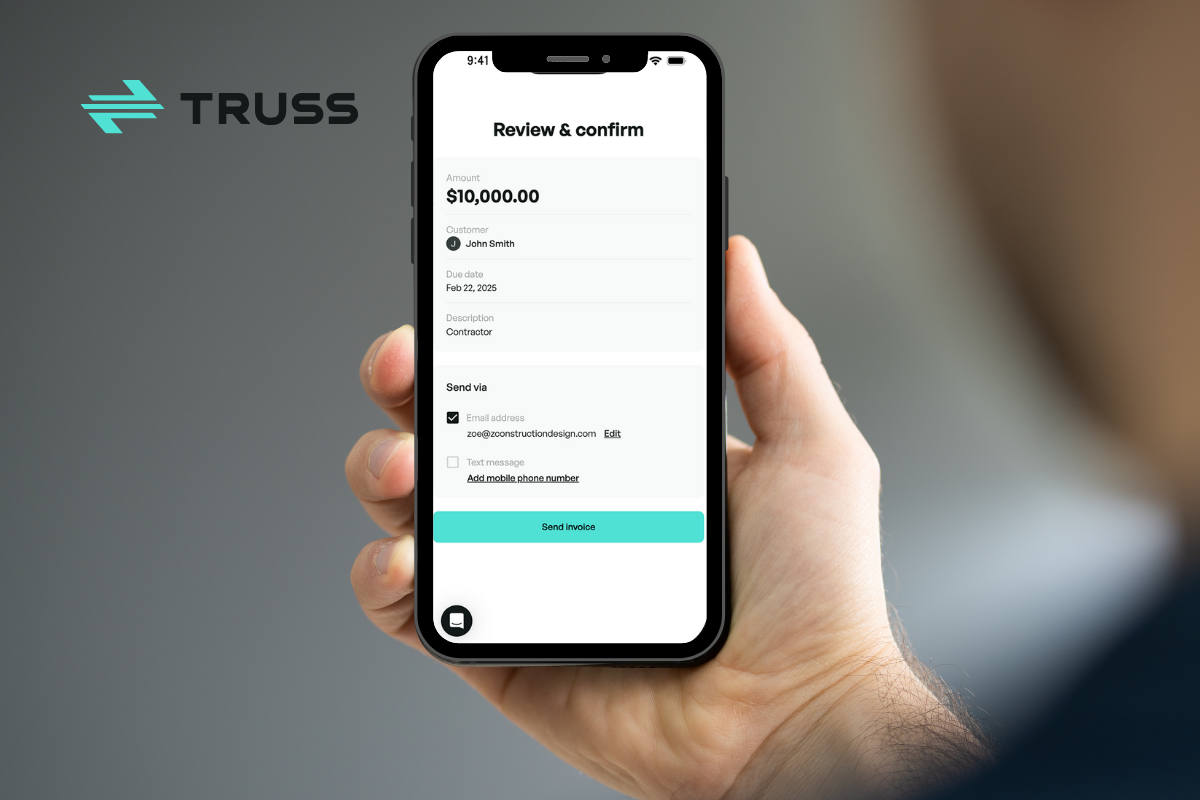In the construction industry, managing your business's finances is about more than balancing the books. It’s about ensuring that cash continues to flow and your projects don’t encounter any financial roadblocks. One area that causes major headaches for many contractors is accounts receivable. When payments are delayed, it can throw everything out of balance. This blog will explore ways to simplify account receivable management, minimize delays, and maintain a stable cash flow to keep your business running smoothly.
Key Insights
- Accounts receivable management is crucial for construction businesses to maintain consistent cash flow.
- Payment delays can cause significant disruptions and slow down project timelines.
- Truss Payments can help automate and streamline accounts receivable processes.
What is Construction Accounting?
Construction accounting, in simple terms, is all about managing the finances associated with your construction projects. It’s not just about tracking profits and expenses like in regular accounting. Construction accounting provides a detailed examination of job costs, materials, labor, and payments across multiple sources. It also handles the complexities of progress payments, change orders, and retainage. Getting a handle on these areas is crucial to making sure your projects stay within budget and meet industry standards.
The Challenges of Accounts Receivable in Construction
Accounts receivable can be a serious headache in construction. Long projects mean payments are spread out over time. And when delays happen, it can lead to cash flow issues that affect everything from paying your crew to covering material costs. Progress payments can be held up by change orders or disputes, and clients might not always pay on time. Keeping track of all this is tricky, and if you’re not on top of it, it can cause a real strain on your finances.
How to Improve Accounts Receivable Management in Construction
So, how can construction businesses better manage their accounts receivable? Here’s a simple guide:
Start with Clear Payment Terms
Both parties should agree on the due dates for payments and the milestones for each phase of work. Having clear payment terms added into your contract from the start can help eliminate a lot of the back and forth.
Send Invoices ASAP
Once a milestone is hit or work is completed, don’t wait—send out that invoice right away. The sooner you send it, the sooner you’ll get paid. Regular invoicing ensures that the financial side of your project doesn’t fall behind and helps you avoid late payments.
Use the Right Accounting Software
Construction accounting software saves you time and effort. With the right tools, you can automatically track payments, create invoices, and send reminders for overdue accounts. This automation reduces errors and significantly alleviates the burden on your team.
Track Retainage Carefully
Retainage, which is money held back until the project is finished, is common in construction contracts. But it can be tricky to track. Keeping detailed records of how much retainage is owed and when it’s due will ensure you receive the full amount once the work is completed.
Don’t Wait Too Long to Follow Up
If a payment is overdue, follow up promptly. The longer you wait, the harder it will be to collect. By setting up a system for regular follow-ups, you can ensure that overdue payments don’t slip through the cracks.
How Truss Payments Makes Life Easier for Contractors
Managing accounts receivable is one of those tasks that can eat up your time if you let it. With Truss Payments, you don’t have to worry about staying on top of every invoice. It automatically handles invoicing, tracks payments, and sends reminders when things slip through the cracks. This gives you more space to focus on running your projects and taking care of clients, rather than stressing over overdue payments.
FAQ’s: Managing Accounts Receivable in Construction
Why is managing accounts receivable so important in Construction?
Timely payments are crucial for maintaining healthy cash flow. When payments are delayed, it can cause a ripple effect, slowing down projects and even impacting your ability to pay your vendors and employees.
How can I reduce overdue payments?
Setting clear expectations right from the start, invoicing quickly, and using automation tools like Truss Payments to remind clients about overdue balances.
What are retainage payments?
Retainage refers to a portion of the payment that’s held until the project’s done. Keeping a close eye on this and following up ensures you receive the final payment when the work is done.
Can technology really help?
Absolutely. With software like Truss, a lot of the manual work of tracking payments is automated. This makes invoicing faster, follow-ups simpler, and cuts down on errors.
Account Receivable for Construction Accounting
Accounts receivable doesn’t have to be a headache. With the right approach—clear payment terms, timely invoicing, and the help of tools like Truss Payments—you can ensure that payments are collected without delays. It may not be the most exciting part of construction, but getting your finances in order will let you focus more on growing your business and completing projects on time.
Open a Truss Payments account and start building your construction business with the tools you need.
Disclaimer: Truss provides tools to help contractors manage and streamline payments. However, Truss is not responsible for financial, legal, or employment decisions made by its users. Always consult with an accountant or legal professional for personalized advice.



